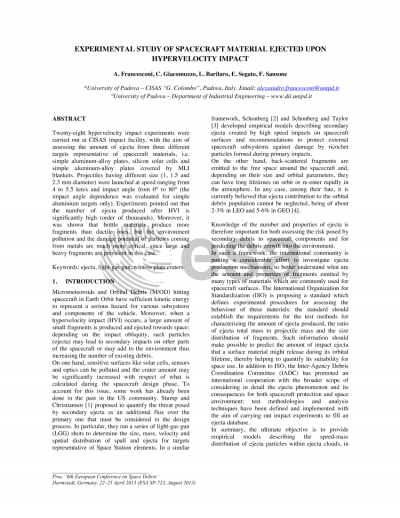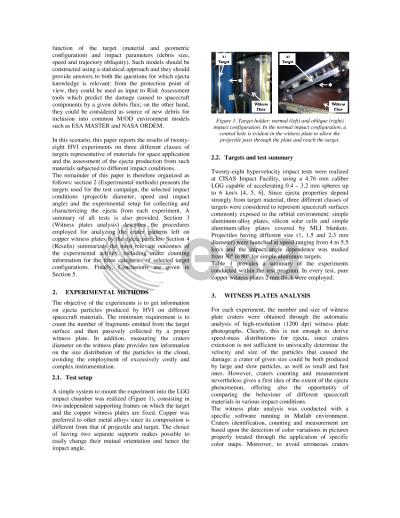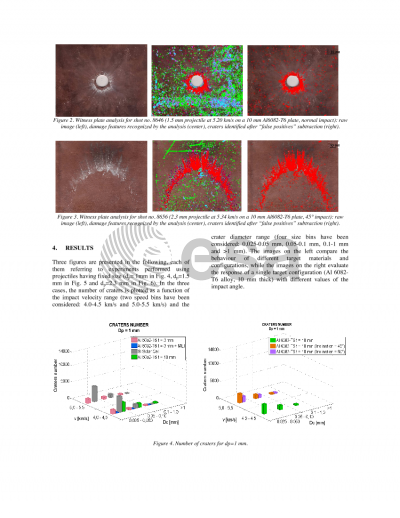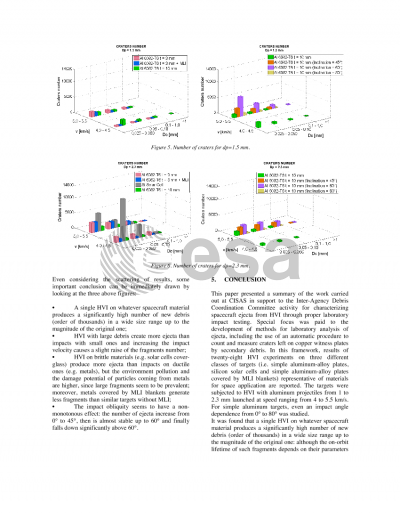Document details

Abstract
Twenty-eight hypervelocity impact experiments were carried out at CISAS impact facility, with the aim of assessing the amount of ejecta from three different targets representative of spacecraft materials, i.e. simple aluminum-alloy plates, silicon solar cells and simple aluminum-alloy plates covered by MLI blankets. Projectiles having different size (1, 1.5 and 2.3 mm diameter) were launched at speed ranging from 4 to 5.5 km/s and impact angle from 0° to 80° (the impact angle dependence was evaluated for simple aluminium targets only). Experiments pointed out that the number of ejecta produced after HVI is significantly high (order of thousands). Moreover, it was shown that brittle materials produce more fragments than ductile ones, but the environment pollution and the damage potential of particles coming from metals are much more critical, since large and heavy fragments are prevalent in this case.
Preview







